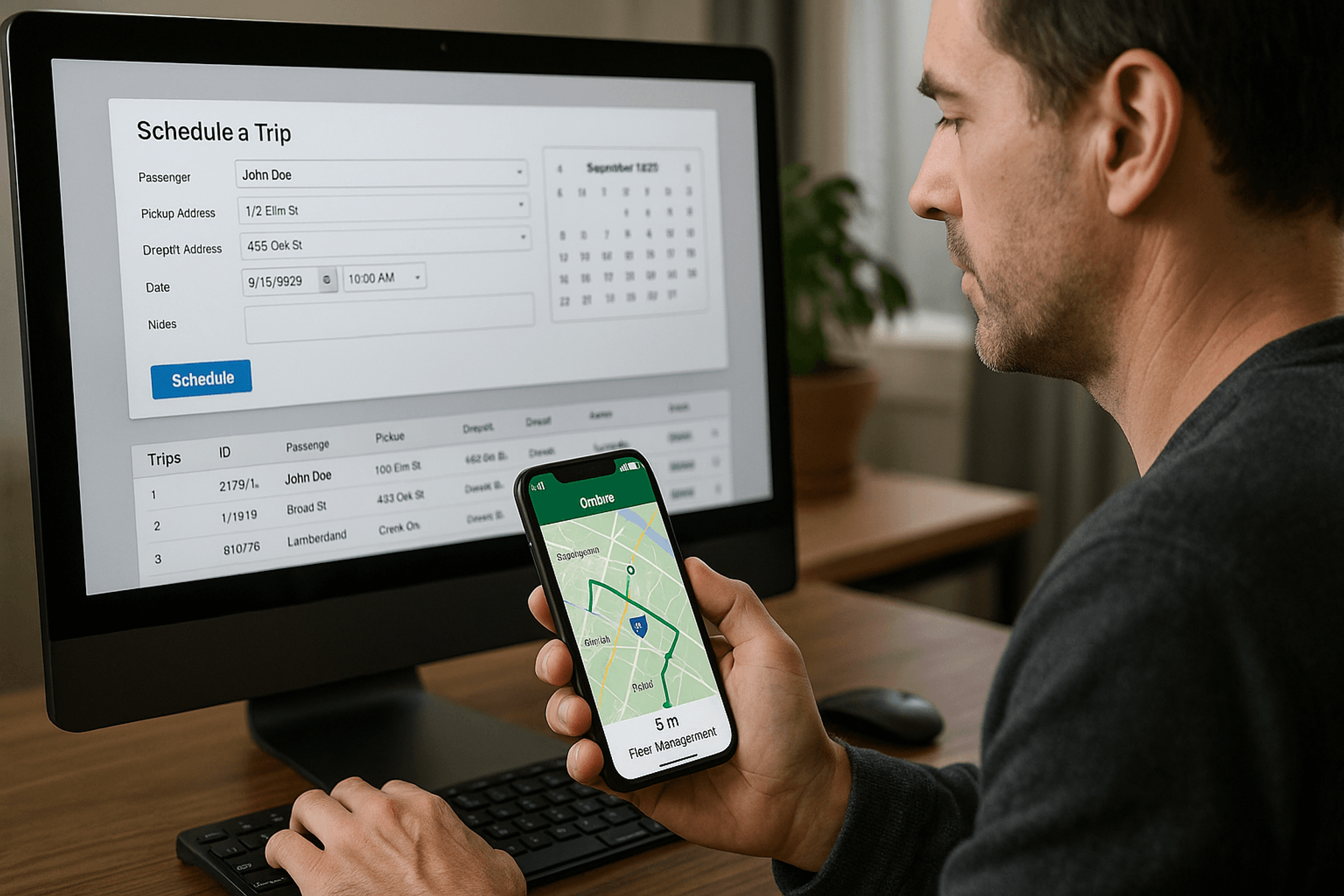Tuesday, May 13, 2025
Top 10 Features Every NEMT Software Must Have in 2025

The Non-Emergency Medical Transportation (NEMT) industry plays a critical role in ensuring patients—especially the elderly, disabled, and underserved—can reach their medical appointments on time. As demand grows and regulations evolve, technology has become central to how transportation providers operate.
In 2025, the expectations for NEMT platforms have reached new heights. To remain competitive and compliant, NEMT providers must adopt modern software solutions that improve operational efficiency, ensure patient safety, and maintain data integrity.
1. Intelligent Scheduling and Dispatching
Efficient scheduling is the backbone of a successful NEMT operation.
- AI-Driven Route Optimization: Software that uses real-time traffic and trip data to generate the fastest and most fuel-efficient routes.
- Real-Time Vehicle Tracking: Dispatchers can monitor vehicle movement and make instant decisions.
- Automated Driver Assignments: Smart algorithms reduce manual effort by assigning trips to the most suitable drivers based on availability, location, and compliance.
2. HIPAA-Compliant Patient Data Management
Protecting patient data is not just ethical—it's the law.
- Secure Patient Record Handling: All personal health information must be securely stored and accessed.
- EHR/EMR Integration: Seamless syncing with hospital systems ensures accurate scheduling and care coordination.
- Data Encryption Standards: Industry-standard encryption prevents breaches and ensures compliance.
3. Real-Time GPS Tracking and Fleet Management
Visibility and accountability are key to operational excellence.
- Monitor Driver Behavior: Speeding, harsh braking, and route deviations can be tracked and corrected.
- Live ETA Updates: Patients and facilities get accurate estimated arrival times.
- Fleet Performance Analytics: Measure fuel usage, idle time, and vehicle utilization to reduce costs.
4. Automated Billing and Claims Processing
Speed up payments and reduce errors with automation.
- Integration with Medicaid, Medicare, and Private Insurers: Submit claims directly from the platform.
- Audit Trail Generation: Keep a detailed record of each trip and transaction.
- Error Reduction and Faster Reimbursements: Automation ensures cleaner claims and quicker payouts.
5. Multi-Platform Mobile Accessibility
Everyone—from drivers to dispatchers—needs reliable access.
- Dedicated Apps: Ensure drivers, members, and coordinators can access features on-the-go.
- Cross-Device Functionality: Compatible with iOS, Android, and tablets.
- Offline Capabilities: Maintain functionality even in low-coverage areas.
6. Rider Communication and Notifications
Clear communication prevents missed appointments and delays.
- SMS/Email/Call Reminders: Notify patients of upcoming trips.
- Trip Status Updates: Keep all parties informed in real-time.
- Two-Way Communication with Drivers: Enables quick resolution of on-the-road issues.
7. Compliance and Credential Management
Stay compliant without the spreadsheet chaos.
- Real-Time Alerts for Expired Documents: Get notified when insurance, licenses, or medical certifications need renewal.
- Staff Certification Tracking: Keep records of all required driver training and renewals.
- Regulatory Compliance Dashboards: See all compliance statuses at a glance.
8. Analytics and Reporting Tools
Make informed decisions backed by data.
- Customizable Dashboards: Tailor metrics to your business goals.
- Performance KPIs: Monitor driver punctuality, trip completion rates, and cancellation trends.
- Trip and Cost Analysis: Identify inefficiencies and opportunities for growth.
9. Integration with Third-Party Systems
Connectivity is the key to streamlined operations.
- EHR, Accounting Software, GPS Platforms: Reduce manual entry and sync data across platforms.
- Open API Support: Enable custom integrations and future scalability.
- Seamless Data Exchange: Minimize lag and reduce data errors.
10. Scalability and Cloud-Based Architecture
Your software should grow with you.
- Easy Expansion: Add new regions, vehicles, or teams without infrastructure overhauls.
- Remote Access for Staff: Enable your team to work from anywhere.
- High Availability and Uptime Guarantees: Ensure continuous access to critical functions.
Conclusion
The NEMT landscape is rapidly evolving, and staying ahead requires more than just dispatching trips—it requires strategic software that empowers your entire operation. By investing in a platform with these 10 essential features, NEMT providers can improve efficiency, reduce costs, and deliver better care experiences in 2025 and beyond.
FAQs
What is NEMT software?
NEMT software helps manage non-emergency patient transportation through scheduling, billing, compliance, and communication features.
Why is HIPAA compliance essential in NEMT?
Because NEMT providers handle sensitive patient information, HIPAA compliance ensures legal data protection and builds trust with healthcare partners.
Can NEMT software integrate with hospital systems?
Yes. Advanced platforms offer integration with EHR/EMR systems for better coordination and trip accuracy.
How does real-time tracking improve NEMT services?
It improves transparency, enhances safety, reduces delays, and boosts patient satisfaction by providing live updates.
What makes a software scalable for NEMT providers?
Cloud-based infrastructure, open API, and multi-region capabilities allow the platform to grow with your business.
- 1. Intelligent Scheduling and Dispatching
- 2. HIPAA-Compliant Patient Data Management
- 3. Real-Time GPS Tracking and Fleet Management
- 4. Automated Billing and Claims Processing
- 5. Multi-Platform Mobile Accessibility
- 6. Rider Communication and Notifications
- 7. Compliance and Credential Management
- 8. Analytics and Reporting Tools
- 9. Integration with Third-Party Systems
- 10. Scalability and Cloud-Based Architecture
- Conclusion
- FAQs